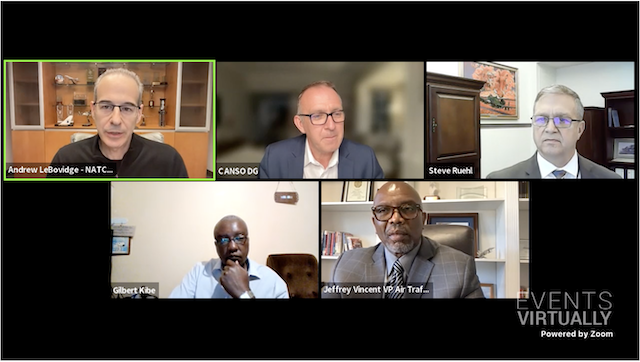LeBovidge Speaks at ATCA Conference on the Future of the Aviation Environment
Executive Vice President Andrew LeBovidge participated on The Future Aviation Environment panel during the Air Traffic Control Association (ATCA) virtual annual conference on Feb. 9 and spoke of the opportunities as well as the challenges of new entrants joining the National Airspace System (NAS). “Everyone shares the exuberance for seeing those new entrants into the aviation community,” said LeBovidge. “But there are several challenges we must meet. One is safe integration into the NAS. It has to be done in a way to inspire the flying public to know that it is being done safely. We do this by ensuring the appropriate number of staff in our facilities that’s highly trained.”
LeBovidge said that another challenge is the lack of stable, predictable funding to sustain the current system and to advance it with new technologies. “Stable, predictable funding is necessary to ensure that the demands of tomorrow are realized,” he said. “Our aviation safety professionals should be given the tools needed to improve the decisions they make to maintain the level of safety that is expected.” LeBovidge concluded that the biggest challenge is to understand how the human element will be incorporated into the new future. “Automation is good,” he said, “but at the moment there is no technology or solution that can replace a highly-trained team of professionals that maintain the safety of the system right now.”
LeBovidge also spoke to the importance of collaboration within the industry, leading to the success of new entrants within the aviation system, stating: “We need to make sure collaboration exists, not only across the industry and with stakeholders, but also with the workforce that is engaged with providing these services.” He said policies, procedures, and practices should all be worked and relied upon by the expertise of individuals that are utilizing the technologies daily. “Without involving these individuals from the developmental stage,” he said, “we run the risk of having ineffective and underutilized technologies, as well as technologies that are not implemented in a manner that’s safe and provides that level of resilience that is necessary.”


